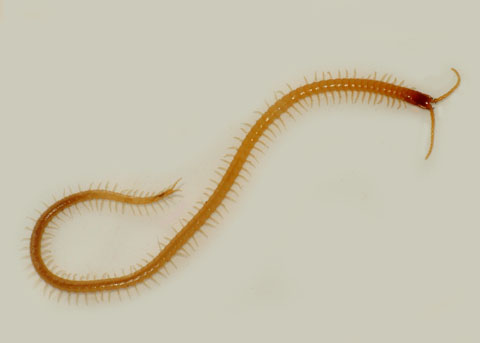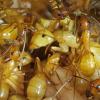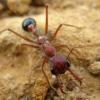Hey everyone! I've received enough Dm's to do this Journal so I'm going to start it. Feel free to post pictures of your colonies and other information you've found out about this SUPER cool species.
First things first, for those who don't know what Stigmatomma pallipes is, they are 6-8mm long ponerine ants that feed upon the hemolymph(blood) of their larvae. They are not commonly kept for several reasons. Firstly, they are "rare". I put this in quotations because if you know what to look for and where to look you can find colonies at least once a day like I do. Secondly, they are kindof hard to maintain. They require high amounts of humidity and with most formicariums you can't afford to skip a day without watering it. Third, they have small colonies originally. They typically have 10-15 workers maturely, but they will combine colonies and I've had a colony of 19 queens and 200ish workers. Fourth, they only lay eggs twice a year. In captivity this is June and November. I have no idea how this relates to in the wild and temperatures in November. Fifth, the larvae take about a year to develop. This can be sped up or slowed down based on how often you feed them and what you feed them. I'll go over this later. Six, they eat geophilomorpha centipedes (soil centipedes). They are very specific in what they eat, though they will eat other prey like beetle larvae and termites this will stunt the larvae's growth. When the larvae eat these centipedes strictly and every couple days they will mature into adults at 9 months. With termites and other prey it will be about 13 months, and a combination is 11 1/2 months. Seven, I am the only one to my knowledge to successfully found this species from just a queen. I will go into a step by step later in this journal. Finally, this species stings. Their stings are generally painful for about 15 minutes and feels a bit worse than a bee sting.
Now, I'm going to go into how many colonies I've had:
I've had 6 successful colonies in which I've kept them for a little more than a year and a half. I recently found a queen and am founding her currently. This will be my 27th queen in attempting founding and will hopefully be my second success. My last successfully founded queen has 12 larvae currently and is doing great! My favorite colony is my 19 queens and 200ish workers. I have to feed them 6 centipedes a day to keep up their rate but I feel it's worth doing for the sake of their size and study of this amazing combination of several colonies. My next best is a 3 queen colony which I had found in a log. This colony... I do think they are a different species due to the fact that they are bigger and they attack any of the other Stigmatomma's I add to them. This is NOT common behavior for them and I've never seen it before... They look exactly like pallipes but they are 1-2mm longer. I had this colony for 8 months but they died for reasons unknown to me. I still have their bodies and I intend to send them to the Museum of Natural History in DC (since it's like 15 minutes from my house). The other colonies are small and are used for observing their behaviors and preferences.
Now, to get to the part EVERYONE wants to know. Where to find them...
So, I'm going to explain where I've found them and so tests I've made with them. My first colony was found in a deciduous forest 5 meters from a stream. The soil was detritus, dirt and sand. You'll see that this soil type is the most common soil I've found them. So, the next couple were found in the same area. A couple others were in my backyard, same soil type and forest type. They are commonly found under rocks. Now, some experiments I've conducted on them. I've put them in terrariums to see how deep they dig and how the format their nests. They dig to only about 1 foot deep, basically where the clay starts. They don't like the clay so they stay above it because it constantly has humidity. I'll post a picture of my findings in nest design later, but it's very random and based mainly on humidity. Though there are some similarities between the several nests I've observed.
Now to the next part that people want to know. How to found them/ care for them...
So, founding is kindof difficult and so is care. This year I caught 30ish more queens of this species in a nuptial flight. Each one I've been modifying my experiment more and more from when I first started this. So in order to found them properly you need a test tube with soil. They lay eggs anywhere between 1-4 months after being caught. despite what I've said earlier, it is possible to found them without larvae. I've found it easier to use them though. Also, feed them centipedes once every other day. Now here's the care for mature colonies:
80%-90% humidity
65 Degrees F for hibernation
75-80F for the nesting behavior
A centipede a day for 5-10 larvae, 2 centipedes for 11-25, 3 centipedes for 26-30, and above that add a centipede for every 5 larvae.
Add soil to help with humidity control and comfort.
Here's a picture of the centipedes they feed upon:

Here's a picture of Workers and queens of Stigmatomma pallipes:

I will add to this when I find some more time later this week. This is incomplete but I wanted to at least start this so others can get some facts on them.
Edited by VenomousBeast, October 2 2019 - 5:05 AM.





















